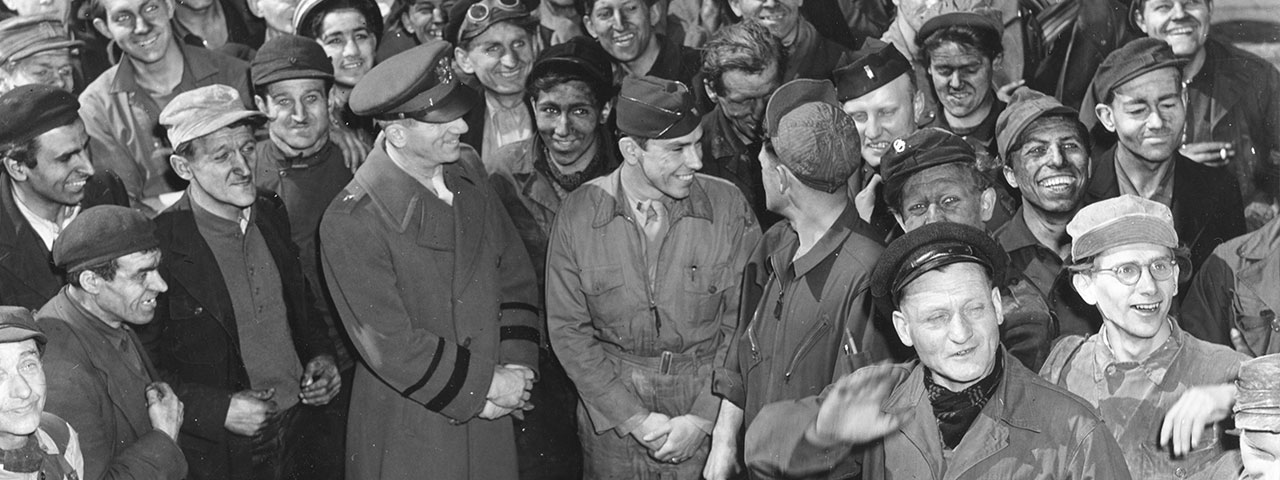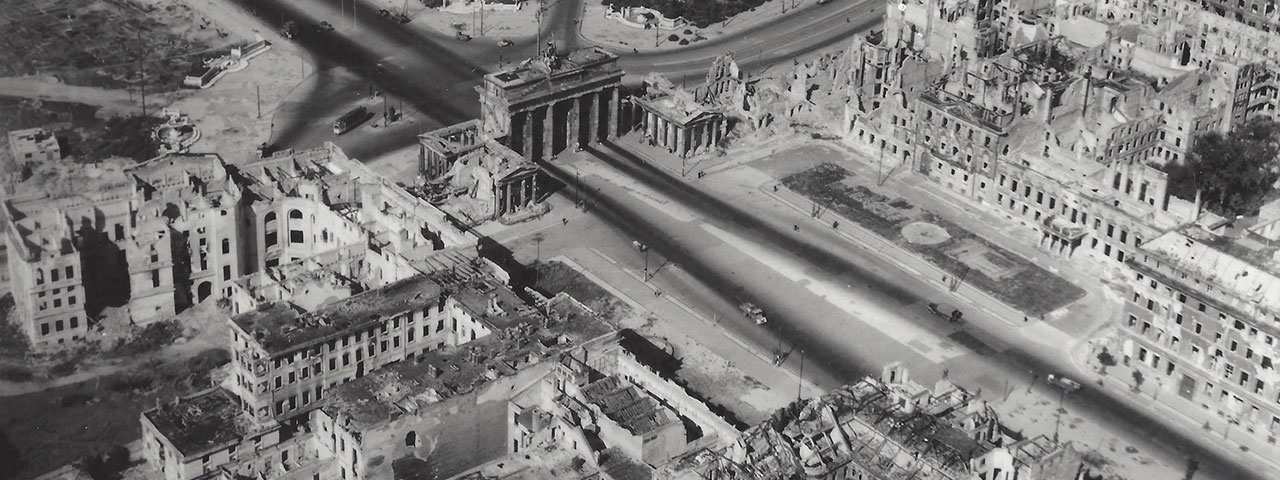THE BERLIN AIRLIFT 1948/49
Three years after Germany’s unconditional surrender on May 8, 1945 and the resulting occupation by the four victorious powers, Berlin experienced a crisis that from today’s perspective appears as the first great conflict of the Cold War. The Soviet blockade of West Berlin confronted the Western powers with virtually insoluble problems. While the causes of the blockade were varied, the immediate occasion was currency reform.
ONE CITY – TWO CURRENCIES
The victorious powers had been forced to tackle the currency situation in Germany since the end of the war in 1945. A drastic glut of money, a lack of acceptance for the currency, and a flourishing black market made reform a matter of urgency. The withdrawal of the Soviet representative from the Allied Control Council in March 1948, however, rendered a joint approach by the four victorious powers unthinkable.
The Western powers announced the currency reform on June 18 and it was implemented two days later. As an immediate response, the Soviet military administration interrupted passenger traffic to and from Berlin on June 19 in order to protect itself from the expected flood of now worthless reichsmarks. A currency reform for the Soviet occupation zone was decreed on June 23. In Berlin the Western powers refused to recognize this “East currency.” Instead they adopted the currency reforms enacted in the Western zones, so that beginning on June 25 the German mark of the Bank of the German States (West DM) also became legal tender in West Berlin. Berlin was now divided not only into four occupation zones, but also into two currency zones.
SUPPLIES FROM THE SKIES
Apart from the mentioned blockades of street traffic on June 19, between June 19 and 29, 1948 the Soviets also successively blocked all routes by land, rail, and water between West Berlin and the three Western zones. Only the air corridors on which the four victorious powers had agreed in the Air Agreement of 1945/46 were unaffected. For that reason the three Western powers began an Airlift to Berlin to supply the city and its approximately two million inhabitants with the necessities. It was an ambitious plan never before attempted on this scale and it was unclear whether it would work.
On June 28, 1948 the first American and British aircraft landed at Tempelhof and Gatow airfields with goods for the people of Berlin. Many other flights followed, but nobody could predict how long the blockade would last. For that reason, the Western powers initially planned to supply the city into the winter. The aim in the first weeks of the Airlift was to fly 4,500 tons of goods into the city every day. This was raised to 5,000 tons a day in the autumn of 1948. Coal to meet the city’s energy needs made up a large proportion of this tonnage.
In October U.S. General William H. Tunner was appointed to head the Combined Airlift Taskforce (CALTF), which had its headquarters in Wiesbaden. He perfected the Airlift. The American military governor of Germany, General Lucius D. Clay, ensured the necessary political support of U.S. President Harry S. Truman. Clay continually requested more and larger aircraft to use in the Airlift, and Truman approved them.
In the first months of the Airlift, the French occupying power participated with six airplanes. The urgently needed third airport in Tegel in the French sector was completed in November 1948. Some 19,000 workers built it in record time, taking just three months. The British mobilized their Royal Air Force and contracted with an additional 25 charter companies to fly mainly oil and gasoline into the city. Aside from their circa 23 percent share of the total Airlift tonnage for freight, the British were also responsible for the lion’s share of passenger transport during the blockade. With their C-54-transport planes, the U.S. forces provided the largest air fleet for “Operation Vittles,” as the Americans called the mission. In spring 1949 the operation to supply Berlin was working so well that on some days more goods were flown into the city than had arrived before the blockade by road, water, and rail.
The Western powers used the media very effectively to publicize this outstanding efficiency. The continuing positive reporting on Allied tonnage and the growing reputation of the Western powers were certainly part of the reason for the lifting of the Soviet blockade on May 12, 1949. Despite the end of the blockade, the Airlift continued for another four months into late summer 1949. The historical events known as the “Berlin Blockade” and the “Berlin Airlift” are thus chronologically not wholly identical.
The lifting of the blockade and the end of the Airlift solved the first crisis of the Cold War by logistical means – without military force. This does not, however, mean that there were no casualties of the Airlift. At least 78 people died in airplane accidents. Their names are engraved on the base of the Airlift Memorial in the Berlin district of Tempelhof.
OCCUPIERS BECOME PROTECTORS
The Berlin Airlift palpably changed the relationship between the Western powers and West Berlin. Just a few years after World War II, the one-time enemies had mastered a severe political crisis by intensive cooperation. The population of Berlin now experienced the occupying powers as protecting powers.











